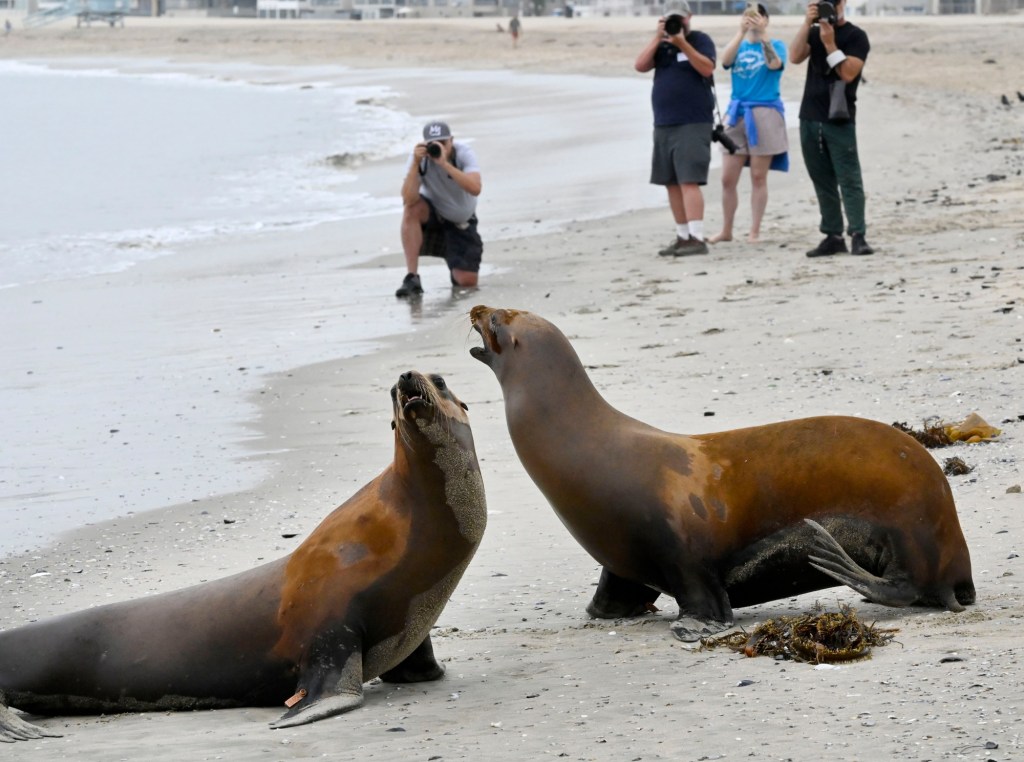As marine mammal care centers along the Southern California coast come up for air after two months of trying to rescue sea lions and dolphins sickened by a toxic algae bloom, their leaders warn the environmental and public safety emergency was a wake-up call for greater collaboration between nonprofits and local municipalities.
“What made this so bad, beyond the sick and dying animals, was that it was a public safety issue,” said John Warner, CEO of the in San Pedro. “You had animals popping out of the water in front of thousands of people while seizing and giving birth. It was horrifying and really dangerous.”
This week, the care center celebrated the recovery and release of several sea lions rescued and treated for domoic acid, a neurological toxin, that poisons the animals after ingesting smaller fish that have feed off the toxic bloom.
Relief has come to the centers in recent days as staff at the MMCLA in San Pedro, the Pacific Marine Mammal Rescue Center in Laguna Beach and the Channel Islands Marine & Wildlife Institute in Santa Barbara County report that animals now found on Southern California beaches no longer seem to suffer from the neurological impairments that was sickening and killing them by the hundreds in June and July.
Toxin symptoms included seizures, premature births, disorientation and lethargy. Seizures and brain inflammation with domoic acid poisoning are often so severe that they lead to death by causing irreversible brain damage.
During the crisis, the largest number of animals were reported on beaches in Santa Barbara and Ventura counties. As the bloom spread south, rescue calls ramped up in Los Angeles and Orange counties and finally spread into San Diego County, with SeaWorld San Diego reporting 18 sea lions now in treatment. Caring for the influx of animals – by flushing out toxins with fluids and giving seizure medication – pushed the centers to capacity and stretched the limits of their staff and volunteers, with many…
Read the full article here






